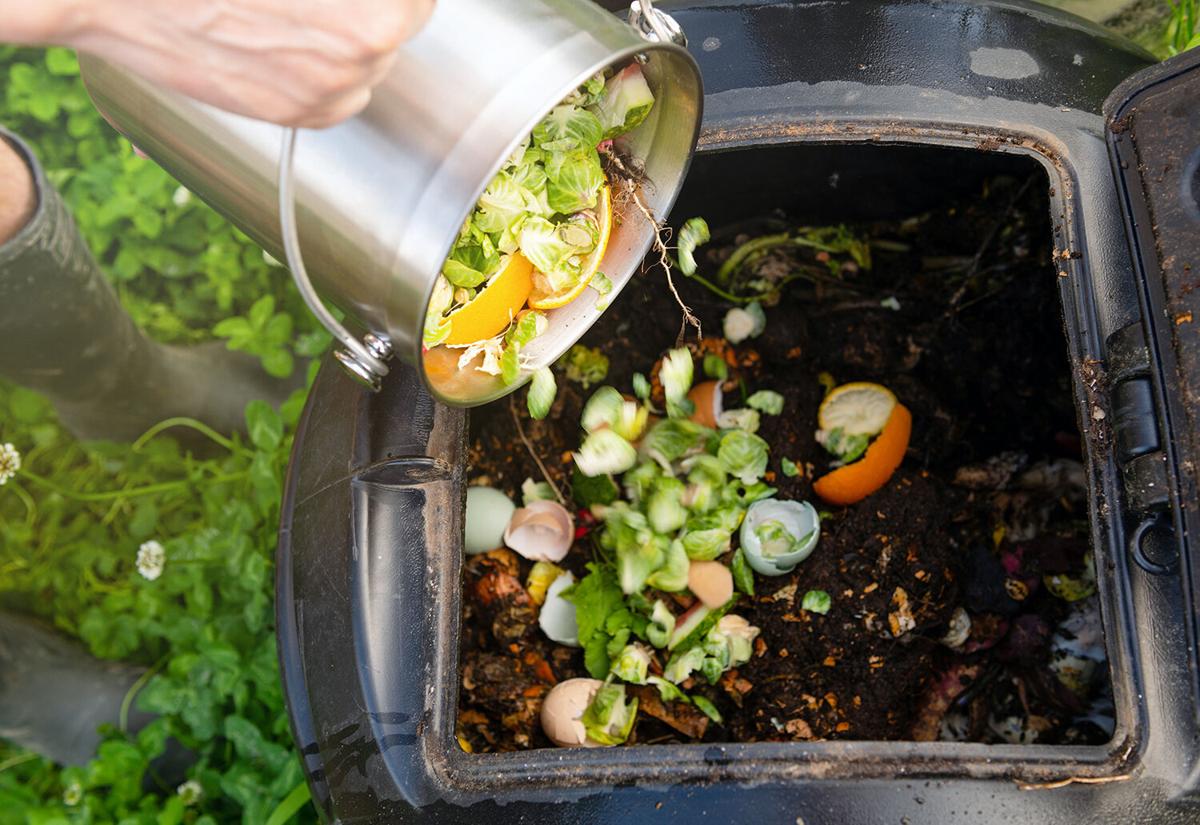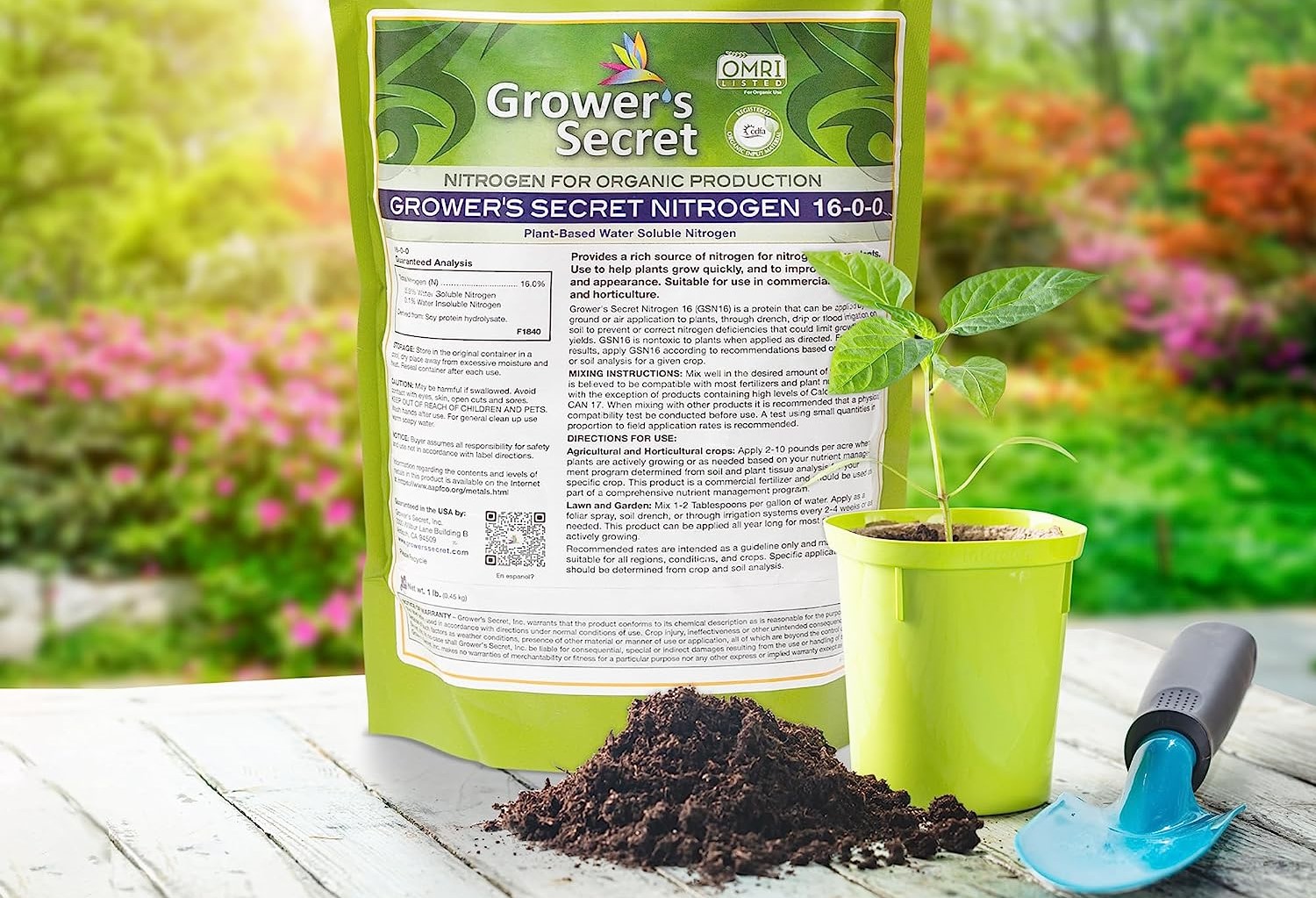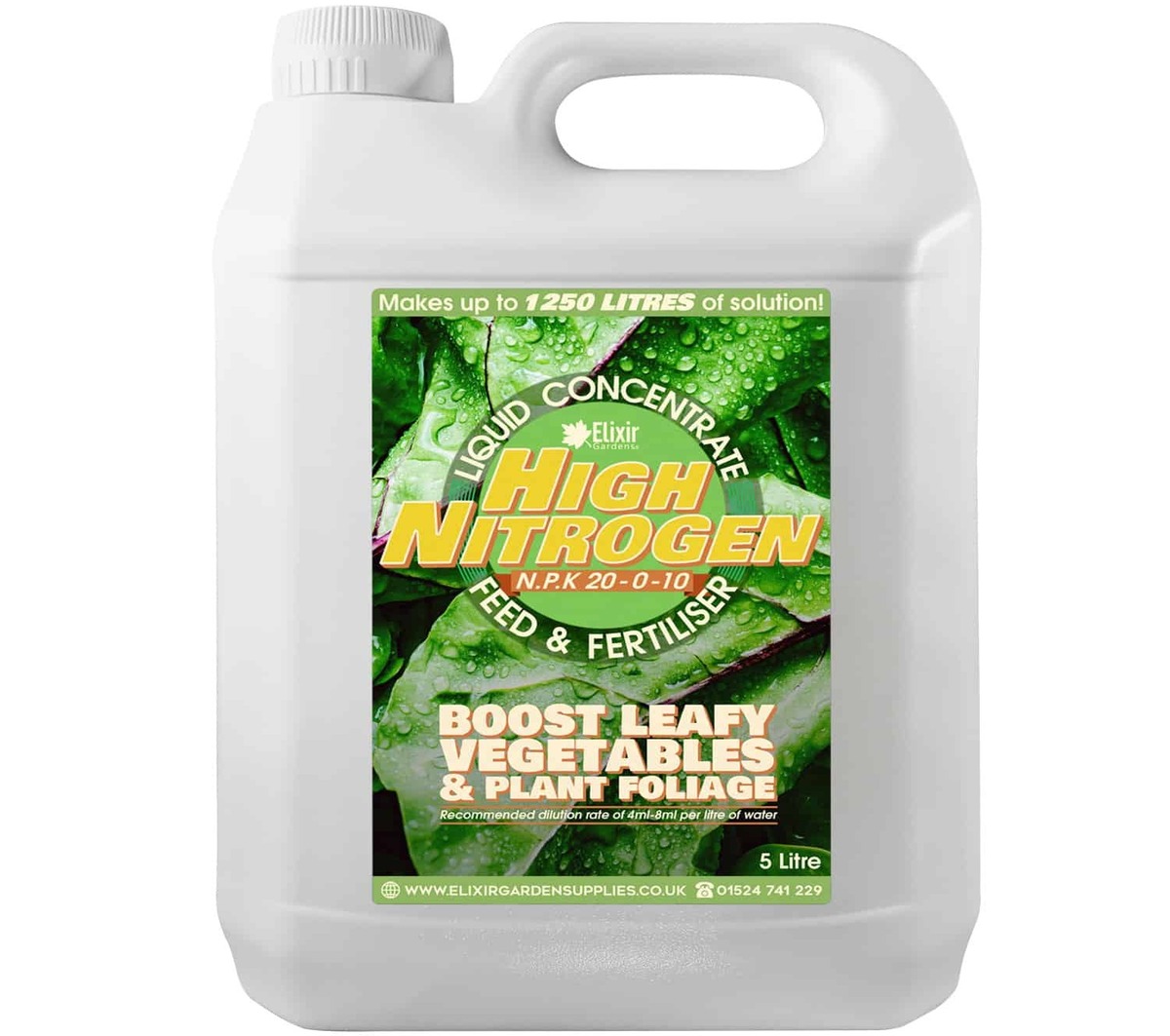Home>Gardening Basics>Understanding Soil>How To Put Nitrogen In Soil


Understanding Soil
How To Put Nitrogen In Soil
Published: February 8, 2024
Learn how to improve soil quality by adding nitrogen. Understand the importance of nitrogen in soil and its impact on plant growth. Discover effective methods for nitrogen application.
(Many of the links in this article redirect to a specific reviewed product. Your purchase of these products through affiliate links helps to generate commission for Chicagolandgardening.com, at no extra cost. Learn more)
Table of Contents
Introduction
Soil is a living, breathing ecosystem that sustains life on Earth. It is composed of a delicate balance of organic matter, minerals, water, air, and living organisms that work in harmony to support plant growth. One of the crucial elements for plant health and vitality is nitrogen. Nitrogen is an essential nutrient that plays a key role in the growth and development of plants, as it is a major component of chlorophyll, the compound that allows plants to photosynthesize and produce food.
Ensuring that soil has an adequate supply of nitrogen is vital for maintaining healthy and productive crops, vibrant gardens, and lush lawns. However, natural processes such as leaching, erosion, and plant uptake can deplete nitrogen levels in the soil over time. Therefore, it becomes necessary for gardeners, farmers, and landowners to replenish the nitrogen content in the soil to sustain optimal plant growth and productivity.
In this article, we will explore the various methods for adding nitrogen to soil, including the use of organic materials, synthetic fertilizers, and nitrogen-fixing plants. By understanding these techniques, individuals can make informed decisions about how to best enhance the nitrogen content in their soil, thereby promoting robust plant growth and contributing to sustainable agricultural practices.
Benefits of Nitrogen in Soil
Nitrogen is a fundamental element for plant growth and development, and its presence in the soil offers a multitude of benefits for agricultural and horticultural endeavors. Understanding the importance of nitrogen in soil can provide valuable insights into the critical role it plays in fostering healthy and productive plant life.
- Promotes Lush Foliage: Nitrogen is a vital component of chlorophyll, the green pigment essential for photosynthesis. Adequate nitrogen levels in the soil contribute to the development of vibrant, lush foliage in plants, enhancing their overall aesthetic appeal and vitality.
- Stimulates Growth: Nitrogen is a primary driver of vegetative growth in plants. It encourages the formation of new shoots, leaves, and stems, supporting robust and vigorous plant development.
- Enhances Crop Yield: By bolstering plant growth, nitrogen-rich soil can lead to increased crop yields, making it a critical factor in agricultural productivity and food security.
- Improves Nutrient Uptake: Nitrogen aids in the absorption of other essential nutrients by plants, facilitating the uptake of minerals necessary for overall health and resilience.
- Supports Protein Synthesis: Nitrogen is a key component of amino acids, the building blocks of proteins. Adequate nitrogen in the soil is crucial for the synthesis of proteins, which are essential for various cellular functions in plants.
By recognizing the manifold benefits of nitrogen in soil, individuals can appreciate its significance in fostering robust plant growth and maximizing agricultural productivity. The next step involves exploring effective methods for adding nitrogen to the soil, ensuring that the essential nutrient is readily available to support thriving plant life.
Methods for Adding Nitrogen to Soil
When it comes to replenishing nitrogen levels in the soil, there are several effective methods that can be employed to ensure the optimal growth and vitality of plants. Whether you are tending to a garden, managing a farm, or nurturing a landscape, understanding these methods can empower you to make informed decisions about how to enhance the nitrogen content in your soil.
- Using Organic Materials: Organic materials such as compost, manure, and cover crops are valuable sources of nitrogen. Incorporating these materials into the soil can gradually release nitrogen, enriching the soil and promoting long-term fertility.
- Using Synthetic Fertilizers: Synthetic fertilizers containing nitrogen, such as urea, ammonium nitrate, and ammonium sulfate, offer a quick and concentrated way to boost nitrogen levels in the soil. Careful application and adherence to recommended dosages are essential to prevent over-fertilization and potential environmental impacts.
- Applying Nitrogen-Fixing Plants: Leguminous plants, including peas, beans, and clover, have the remarkable ability to form symbiotic relationships with nitrogen-fixing bacteria in their root nodules. These plants can enrich the soil with nitrogen through biological nitrogen fixation, making them valuable additions to crop rotation and soil improvement strategies.
By leveraging these methods, individuals can effectively augment the nitrogen content in their soil, providing plants with the essential nutrient they need for robust growth and development. The choice of method may depend on various factors, including the specific needs of the plants, the scale of cultivation, and the desired sustainability of agricultural practices.
Using Organic Materials
Organic materials are valuable resources for enriching soil with nitrogen in a sustainable and environmentally friendly manner. By incorporating organic materials into the soil, individuals can foster long-term fertility and promote the overall health and productivity of plants. The use of organic materials offers a natural approach to nitrogen supplementation, supporting the principles of organic gardening and sustainable agriculture.
Compost is a prime example of an organic material rich in nitrogen. Composting organic waste, such as kitchen scraps, yard trimmings, and plant residues, can yield nutrient-rich compost that serves as an excellent source of nitrogen for the soil. When integrated into the soil, compost gradually releases nitrogen, providing a steady and balanced supply of the essential nutrient to support plant growth.
Additionally, animal manure is a valuable organic material that can contribute to soil nitrogen levels. Livestock manure, such as that from cows, horses, chickens, and rabbits, contains nitrogen in the form of urea and organic matter. When properly composted or aged, manure can be applied to the soil to enhance its nitrogen content, thereby fortifying the soil with essential nutrients for plant development.
Cover crops, such as legumes, also play a crucial role in enriching the soil with nitrogen. Leguminous cover crops have the remarkable ability to form symbiotic relationships with nitrogen-fixing bacteria in their root nodules, a process known as biological nitrogen fixation. As a result, these cover crops can increase the nitrogen content in the soil, making them valuable components of crop rotation and soil improvement strategies.
By harnessing the power of organic materials, individuals can cultivate nitrogen-rich soil that provides plants with the vital nutrients they need to thrive. Embracing the use of organic materials not only supports sustainable agricultural practices but also contributes to the creation of healthy, vibrant ecosystems that benefit both plants and the environment.
Using Synthetic Fertilizers
Synthetic fertilizers containing nitrogen are a widely utilized method for rapidly replenishing nitrogen levels in the soil and supporting robust plant growth. These fertilizers provide a concentrated and readily available source of nitrogen, offering a practical solution for addressing nitrogen deficiencies in agricultural, horticultural, and landscaping settings.
Common synthetic fertilizers that contribute to soil nitrogen include urea, ammonium nitrate, and ammonium sulfate. These fertilizers are formulated to deliver nitrogen in various chemical compositions, allowing for flexibility in addressing specific soil and plant requirements. When applied according to recommended dosages and guidelines, synthetic fertilizers can effectively enhance the nitrogen content in the soil, thereby bolstering plant vigor and productivity.
It is essential for individuals utilizing synthetic fertilizers to exercise care and precision in their application. Over-fertilization can lead to nitrogen runoff, potentially causing environmental harm by contaminating water sources and disrupting ecological balances. By adhering to responsible fertilization practices, such as proper dosage calculations, timing of application, and consideration of environmental factors, the potential risks associated with synthetic fertilizers can be mitigated.
Furthermore, the use of slow-release synthetic fertilizers can offer a more controlled and sustained approach to nitrogen supplementation. These fertilizers gradually release nitrogen over an extended period, minimizing the risk of nutrient leaching and ensuring a more balanced and enduring provision of nitrogen to the soil and plants.
While synthetic fertilizers provide an efficient means of addressing immediate nitrogen deficiencies in the soil, it is important to consider their long-term impact on soil health and environmental sustainability. Integrating organic practices and alternative nitrogen supplementation methods can complement the use of synthetic fertilizers, promoting a holistic approach to soil nourishment while minimizing potential ecological repercussions.
Applying Nitrogen-Fixing Plants
Nitrogen-fixing plants, particularly legumes, offer a natural and sustainable approach to enriching the soil with nitrogen. These remarkable plants have the unique ability to form symbiotic relationships with nitrogen-fixing bacteria, a process known as biological nitrogen fixation. Through this symbiosis, nitrogen-fixing plants can convert atmospheric nitrogen into a form that is readily available to other plants and the soil, thereby enhancing nitrogen levels and supporting overall soil fertility.
Leguminous plants, such as peas, beans, lentils, and clover, are renowned for their capacity to engage in biological nitrogen fixation. The roots of these plants form nodules that house nitrogen-fixing bacteria, allowing the plants to draw in atmospheric nitrogen and convert it into ammonium, a form of nitrogen that enriches the soil. As a result, cultivating nitrogen-fixing plants can contribute to the sustainable management of soil fertility and the promotion of healthy ecosystems.
Integrating nitrogen-fixing plants into crop rotation systems can bring about numerous benefits. By including legumes in crop rotations, farmers and gardeners can harness the nitrogen-fixing capabilities of these plants to naturally enhance soil fertility and reduce the reliance on external nitrogen inputs. This practice not only supports sustainable agricultural methods but also contributes to the conservation of soil health and the preservation of natural resources.
Furthermore, nitrogen-fixing plants can serve as valuable green manure crops. When incorporated into the soil as green manure, these plants contribute organic matter and nitrogen, enriching the soil and preparing it for subsequent crops. The incorporation of green manure crops into agricultural systems offers a regenerative approach to soil management, fostering resilience and productivity in the long term.
Embracing the cultivation of nitrogen-fixing plants represents a harmonious and ecologically sound strategy for enhancing soil fertility and promoting sustainable agricultural practices. By leveraging the inherent capacity of these plants to fix atmospheric nitrogen, individuals can actively contribute to the restoration and preservation of soil health while reducing the reliance on external inputs for nitrogen supplementation.
Conclusion
The pivotal role of nitrogen in soil health and plant vitality cannot be overstated. As a fundamental nutrient essential for plant growth, nitrogen plays a crucial part in sustaining agricultural productivity, fostering vibrant gardens, and maintaining lush landscapes. By understanding the significance of nitrogen in soil, individuals can make informed decisions about how to effectively enhance soil fertility and support robust plant growth.
Exploring the diverse methods for adding nitrogen to the soil has revealed valuable insights into the range of approaches available to gardeners, farmers, and land stewards. From the utilization of organic materials and synthetic fertilizers to the cultivation of nitrogen-fixing plants, each method offers unique benefits and considerations for enhancing soil nitrogen levels.
Organic materials, such as compost, manure, and cover crops, provide a natural and sustainable means of enriching the soil with nitrogen. Embracing the use of organic materials not only supports the principles of organic gardening but also contributes to the creation of healthy, thriving ecosystems that benefit both plants and the environment.
Synthetic fertilizers, while offering a rapid and concentrated source of nitrogen, necessitate careful application and consideration of their long-term impact on soil health and environmental sustainability. Balancing the use of synthetic fertilizers with organic practices can promote a holistic approach to soil nourishment and mitigate potential ecological repercussions.
Furthermore, the integration of nitrogen-fixing plants, particularly legumes, presents an ecologically sound and regenerative approach to enhancing soil fertility. By harnessing the natural capacity of these plants to fix atmospheric nitrogen, individuals can actively contribute to the restoration and preservation of soil health while reducing reliance on external inputs for nitrogen supplementation.
In conclusion, the methods for adding nitrogen to soil encompass a spectrum of approaches that cater to diverse needs and priorities. Whether prioritizing sustainability, efficiency, or ecological stewardship, individuals can leverage these methods to cultivate nitrogen-rich soil, thereby fostering vibrant plant growth and contributing to the resilience and productivity of agricultural and horticultural systems.










